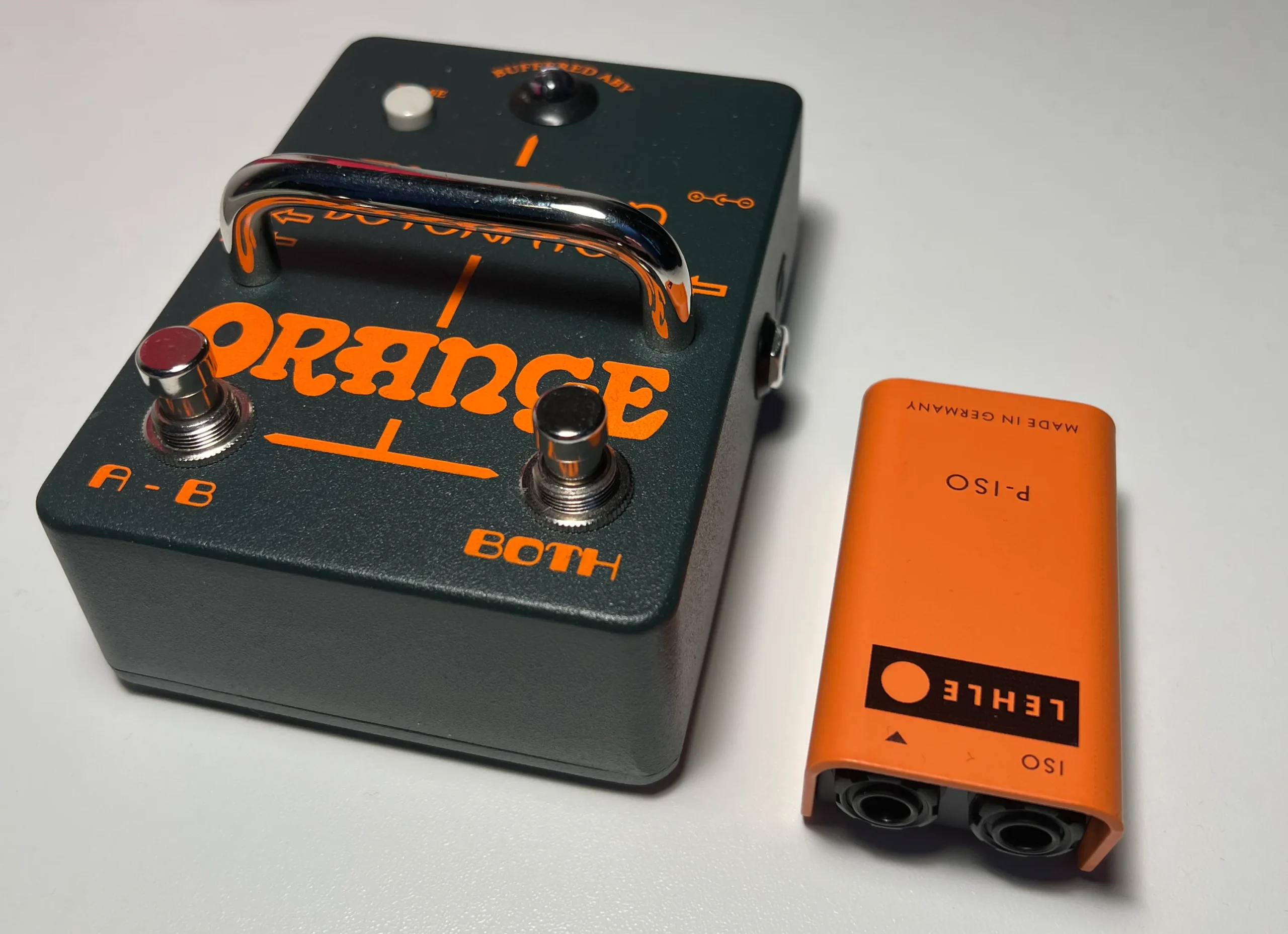A dual guitar amplifier setup, such as a stereo rig, often requires isolating the signal ground of the second amplifier to prevent ground loop hum. The Orange Amp Detonator has served this purpose exceptionally well. However, with the upgrade, it can now move to the toolbox for occasional use, as the Lehle P-ISO takes over as the primary isolator.
We’re especially impressed with the Lehle P-ISO. The color even shifted further toward orange—and we do like apples and oranges. 🍊
Benefits
- Completely passive—no power supply required
- Easy to cable and set up
- Extremely compact size
- High-end audio transformer for excellent sound quality
- Immune to inductive hum pickup
- Supports phase inversion—useful in certain situations—by feeding or taking the signal from the ring of the TRS jack and connecting the tip to the sleeve
- Can operate in reverse if the output side needs to be grounded to the enclosure—this may perform better in some applications
- Flexible configuration options—supports unbalanced-to-unbalanced, unbalanced-to-balanced, balanced-to-unbalanced, and balanced-to-balanced connections, both as designed (input to output) and in reverse (output used as input)
Drawbacks
- None that come to mind
Why upgrade?
The main drawback of the Orange Amp Detonator was its bulky size, taking up significant real estate on a pedalboard. It is also somewhat sensitive to inductive coupling, which can generate noise in certain positions—for example, near an amp or a power supply.
That said, it’s important to remember that, in addition to functioning as an isolator, the Amp Detonator is specifically designed and intended as an ABY switch. Nothing described above changes the fact that it remains an excellent product.
Lehle P-ISO specifications
| Weight | 206 g |
|---|---|
| Length | 71.5 mm / 2.8″ |
| Width | 41 mm / 1.6″ |
| Overall height | 31 mm / 1.2″ |
| Frequency range | 20 Hz – 100 kHz -0.1 / +0.4 dB (source 600 Ω, load 1 MΩ) |
| Total harmonic distortion | 0.003 % (0 dBu, 1 kHz) |
| Input impedance (transformer load impedance) | min. 2 MΩ at 2 kHz |
| Max. level | 7.7 V RMS / 20 dBu (THD < 1 %, 50 Hz – 20 kHz) |
The specified 600 Ω source and 1 MΩ load impedances (or values within that range) represent typical real-world operating conditions. For example, in our use case, the output impedance of the Neural DSP Quad Cortex feeding the isolator is 560 Ω, while the input impedance of the subsequent Orange Pedal Baby is 1 MΩ.
We highly recommend this product!


